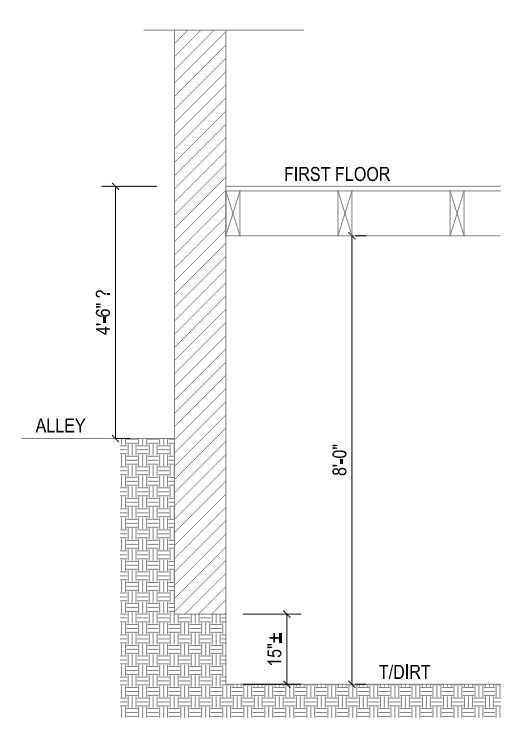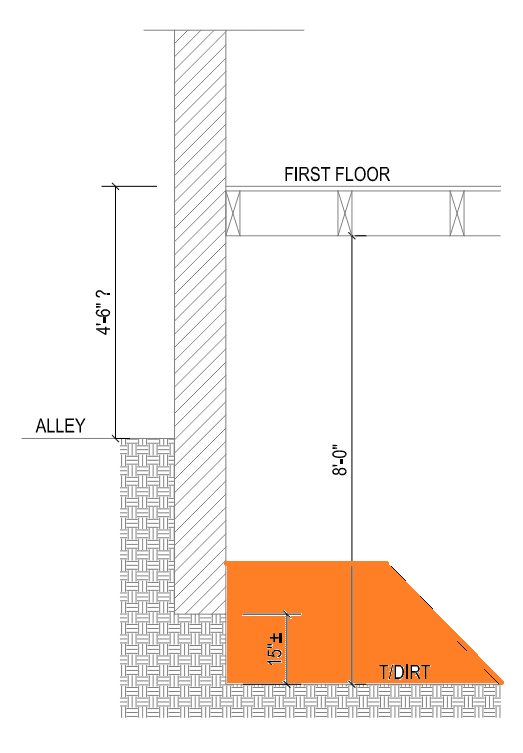Ben29
Structural
- Aug 7, 2014
- 325
I am working with a contractor who never performed basement lowering (basement underpinning). I agreed to provide underpinning sequence drawings. I get to the house to take measurements so that I can create the drawings. I get there and find out that they totally excavated the entire basement, 15 inches below the existing foundation walls!!! I told them to stop digging immediately. But the entire basement is now dug out. I am sending them temporary bracing details to keep the end walls from caving in (rowhouse is an end-unit next to an alley = vehicle surcharge on endwall!).
aside from the bracing detail, what do I do to temporary support the walls from below? good chance we won't start underpinning for a couple of weeks yet. or Do we just start underpinning as this has now become an emergency repair?

aside from the bracing detail, what do I do to temporary support the walls from below? good chance we won't start underpinning for a couple of weeks yet. or Do we just start underpinning as this has now become an emergency repair?






